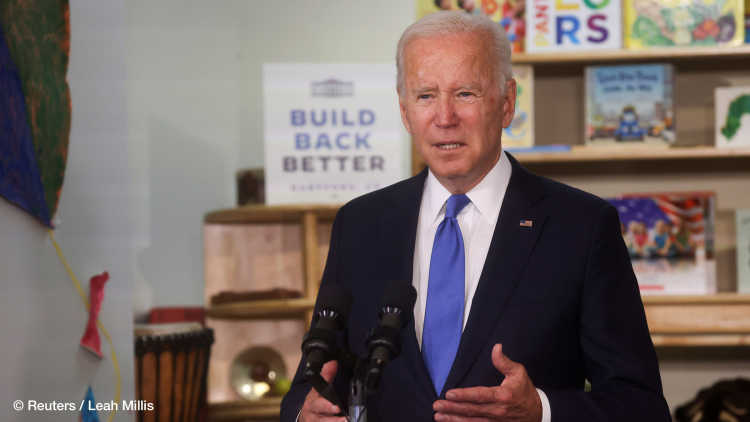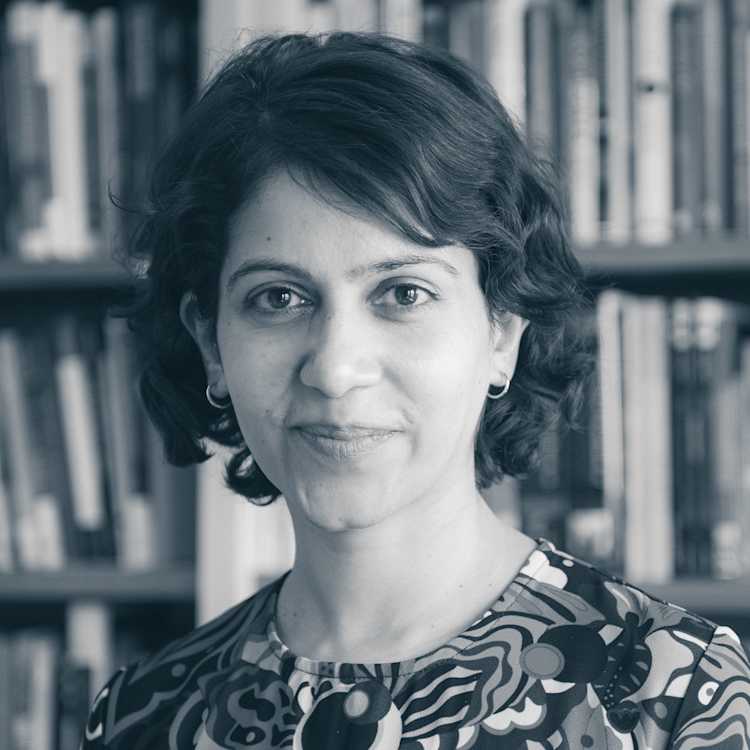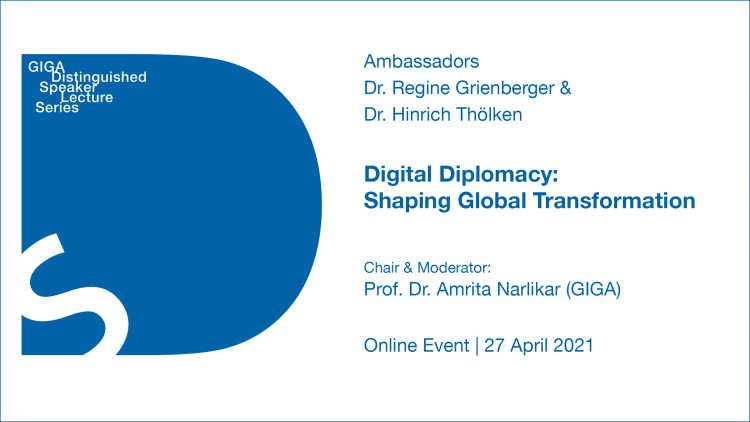- Home
- Publications
- GIGA Focus
- Paper Ballots with Digital Transparency: Kenya’s Pioneering Election
GIGA Focus Africa
Paper Ballots with Digital Transparency: Kenya’s Pioneering Election
Number 7 | 2022 | ISSN: 1862-3603

In 2022, Kenyan electoral authorities took the radical decision to digitally publish handwritten result forms from over 46,000 polling stations, allowing any Kenyan with an Internet connection to tabulate results. Unlike Brazil and the United States, they avoided electronic voting machines but opted for paper ballots alongside digital transparency. This combination may have contributed to the notably peaceful election seen.
Kenya is a digital leader in Africa and a pioneer of digital technology in finance. But previous elections have suffered from a lack of trust in the electoral process, leading to violent unrest and the nullification of results by the Supreme Court of Kenya.
In 2022, the Independent Electoral and Boundaries Commission of Kenya (IEBC) leveraged widespread digital connectivity for voting processes, including the release of raw local tallies soon after voting closed. Access to such results led to initial confusion during tallying by media outlets but the results survived a challenge by the losing party in the Supreme Court.
A consortium of civil society organisations, led by startup Ushahidi, simultaneously collected and responded to crowdsourced data and queries from partners and the public, tagging misinformation and violent threats plus escalating inflammatory material for action by authorities. There was minimal violence before and after the election.
Despite post-result infighting between IEBC commissioners, the Supreme Court challenge, and the extremely expensive nature of the process, the use of digital transparency provides a viable model for other digitally connected democracies in Africa.
Policy Implications
Electoral integrity is essential for a functioning democracy. Paper voting can be combined with digital technology to facilitate voter identification, transmission of results, and real-time publication thereof. Crowdsourced on-the-ground reports can also foster accountability and combat misinformation. Such electoral technology in Africa is in its infancy and should be supported with technical skills and funding to improve its speed, security, reliability, and functionality.
Electoral Integrity as a Global Issue
Election integrity is a topic of pressing concern for democracies around the world (Garnett, James, and MacGregor 2022). Numerous cases of controversy, most famously Brazil and the United States, have triggered global concern about electoral integrity and institutional breakdown. Africa has been experiencing such conditions for decades, with election integrity often called into question (Van Ham 2013). The Kenyan election in 2022 was set to be another case in point.
The 2022 Kenyan General Election
On 9 August 2022 national elections were held in Kenya to elect the president, senators, county governors, members of the National Assembly, and members of county assemblies. There were four candidates for President but only two had a realistic chance of winning: Raila Odinga, opposition leader and former prime minister of Kenya, and William Ruto, the current deputy president. For the two weeks prior, the entire country slowed as the predicted tension between hope and fear emerged (Gathara 2021). The torrent of violence following the 2007 election was still fresh in many Kenyans minds, as were the riots and political instability around the Supreme Court challenges in 2013 and 2017, too.
Fifth Time Lucky
This was the fifth presidential election for opposition leader Raila Odinga, who had lost in all previous attempts – often under controversial circumstances. Nicknamed Baba (or “Father”), Raila Odinga also goes by “Raila” instead of “Odinga” to avoid confusion with his father, Odinga Odinga, a previous vice-president and prominent figure in the fight for independence from Great Britain. The Odinga family are ethnically Luo, the fourth-largest ethnic group in Kenya. Underlying tensions between the three most powerful ethnic groups, Kalenjin, Kikuyu, and Luo, have characterised elections since Kenyan independence, with leaders historically favouring their own such groups and associated regions. A breakdown in relations between the Kikuyu and Luo tribes occurred after Raila’s father was dismissed in 1966 and has endured ever since. In 2007, a failure of the election process between Raila and the Kikuyu candidate, incumbent president Mwai Kibaki, led to an explosion of violence between ethnic groups after Kibaki swore himself in despite an information vacuum about the real winner of the election. This violence left over 1,500 dead and 300,000 displaced, requiring diplomatic intervention by former UN secretary-general Kofi Annan – who negotiated power-sharing on the basis of Kibaki as president and Raila as prime minister.
William Ruto and the International Criminal Court (ICC)
Raila’s 2022 opponent Ruto is neither Kikuyu nor Luo, but he is nonetheless inextricably linked to this turbulent history existing between the two ethnic groups. In 2007 Ruto, who is ethnically Kalenjin, was minister for higher education, science and technology. Along with three other suspects, he was later accused of crimes against humanity by the ICC for allegedly forming an organisation that then perpetrated violence in attempt to relocate ethnic communities and form a power base in the heavily contested Rift Valley. While the charges were later dropped by the ICC after witnesses retracted their statements, his reputation remained tied to these tumultuous events. Ruto attained his role as deputy president by joining with fellow ICC suspect Uhuru Kenyatta to fight the charges. Once they were dropped, the two then formed a joint ticket that won elections in 2013 and 2017 against Raila. The latter disputed the election in 2017, winning his case at the Supreme Court due to irregularities with voting forms and failures of election technology. This triggered a nullification and a new presidential election that Raila refused to contest, citing ongoing concerns with the electoral system. Considering this background, the polarisation between Ruto and Raila supporters was prevalent and the potential for ethnic violence tangible. Many Kenyans expressed their desired winner to be peace rather than a specific candidate (Agence France-Presse 2022).
Hustlers versus Dynasties
In the 2022 election, Raila campaigned for a corruption-free government and universal health insurance – or “Baba Care.” In response, Ruto branded Raila part of the elite Kenyan political dynasty competing against himself as the fresh, business-minded underdog. Despite his long involvement in Kenyan politics, Ruto said he was an outsider who grew up with nothing and merely “hustled” his way to the top. Arriving at campaign rallies with gifts of free wheelbarrows, he expressed his sympathies to those without stable income who struggle to survive in the “Hustler Nation” – as he labelled Kenya. This was widely seen by commentators as an attempt to shift the narrative from the above tribal divisions to ones of class instead, or “Hustlers vs Dynasties” (Karanja 2022). In a surprising move, the departing president Uhuru Kenyatta had a falling out with his deputy Ruto and instead endorsed Raila as candidate. This further played into Ruto’s narrative as being the underdog outsider.
A (Relatively) Smooth Start
As the 2022 election began, there were already scattered incidents of violence and voting irregularities. A member of parliament had shot an opponent’s aide dead at a polling station. An electoral returning officer had mysteriously disappeared after leaving to take a phone call and was later found dead in a river. The ballot papers of two districts were printed with candidate photos mistakenly swapped. But, in comparison to previous elections, the 2022 iteration was peaceful and the process orderly. Even the dreaded biometric voter-identification machines that had caused calamitous issues in previous elections functioned properly in 99.6 per cent of the country’s polling stations.
Electoral Authorities under Pressure
After voting concluded, the electoral authority known as the Independent Electoral and Boundaries Commission (IEBC), led by its high-profile chairman Wafula Chebukati (who oversaw the nullified 2013 election) went to great lengths to maximise transparency. This involved releasing results from each polling station directly to the public through their web portal. Each “34A form” was a photo of a handwritten tally signed by both local IEBC authorities and political parties’ local representatives responsible for supervising the electoral process. All 46,229 forms were uploaded as soon as possible, even before the physical copies could be shuttled to the national tallying centre by the returning officers. The web platform was completely transparent, such that anyone in Kenya with an Internet connection could download the scans and look at the voting results from that station. This release of forms triggered a manic race between media outlets, the public, and political-party offices to quickly tally the votes as the forms trickled onto the platform. Aside from mainstream media tallies, crowdsourced websites used a combination of optical character recognition, machine-learning algorithms, and online human inspection by thousands of volunteers to tally the results. Since each was operating independently, they were all coming to different totals; as media outlets broadcast their running tallies, the public became more confused at who was winning. “If your candidate is losing, just change the channel!” said one tweet.
Confusion and Misinformation
Misinformation circulated on mass media for days as various amateur and semi-professional talliers claimed their preferred candidate would win. Confusion was the prevailing emotion for an entire week. The only point on which everyone could agree was that the election would be close. So much so, in fact, that the existence of the other two, relatively insignificant, minor candidates might mean that neither of the two leading ones would reach the 50 per cent + 1 vote required for victory. This would trigger a runoff, with associated delays and high costs. Aside from the direct effects of the latter, the runoff is also widely dreaded since every election sees the Kenyan economy grind to a halt, leaving those on the poverty line with no income for days or even weeks.
During this period of misinformation, a non-profit startup named Ushahidi (or “Evidence” in Swahili) took on the task of verifying reports from mainstream outlets, social media, and the public. By using a volunteer team trained in media verification it was able to assess the credibility of reports and discredit dangerous misinformation that might push the already tense environment toward the levels of extreme violence seen in 2007. Using a purpose-built web platform and a 24-hour situation room, Ushahidi was able to verify 11,000 reports and release them to the public while flagging key instances of misinformation to authorities and foreign observers.
Meanwhile, the IEBC continued to beg for patience as they continued their strictly predefined process of verifying the digital 34A scans with physical copies that were returned to the tallying centre. This was done before releasing the 34B forms that contained result summaries at the county level, thereafter publishing the 34C form that declared the winner. The nullification of the 2017 election by the Supreme Court, due to a multitude of irregularities, seemed to have left the IEBC laser-focused on accuracy rather than speed.
Despite the extreme pressure, Kenya remained relatively calm until the announcement of overall tallies. Mainstream media had stopped showing the latter to avoid stoking confusion, preferring to focus instead on gubernatorial races – of which Ruto’s party, the United Democratic Alliance, was winning a surprising number, even in safe seats long-held by older members of parliament. Many women had won governor and MP races against the odds, as did Kenya’s first MP living with albinism, too. The only winner of interest left to announce was president.
The Result
Shortly before the election result was to be declared, in the vote-tallying auditorium situated in the touristic Bomas of Kenya, on the outskirts of Nairobi, feelings of optimism abounded. Earlier in the day, the IEBC broadcast that a winner would be declared on 15 August at 3 p.m. It was hoped that both candidates might politely sit together in the auditorium for the announcement. This followed a long, slow counting process that was getting close to the seven-day deadline specified in the constitution. The entourage of one candidate, Ruto, had arrived and that of the second, Raila, was expected soon. For both presidential candidates to be physically present at such an announcement would be a first since independence. Kenyan elections were notorious for their bitter history of vote-rigging, court challenges, rioting, violence, and distrust in electoral authorities.
From Melody to Melee
As of 3 p.m., Raila was still to arrive at the Bomas of Kenya. The ever-present choir in the IEBC auditorium continued to sing songs of peace to fill the time. The festive energy of the songs almost begged the two candidates to stay peaceful in their reactions to the decision. As the choir continued to sing, the seemingly independent vote tallies on social media were in increasing agreement that Ruto was ahead at just above 50 per cent. Finally, at 6 p.m., a Raila representative announced that they disputed the result and would not be coming to the IEBC auditorium. Moments later, a group of four out of the seven IEBC commissioners held a press conference from a nearby hotel adamantly stating they did not support the result about to be announced due to the “opaque nature” of the final tallying. The four dissenting commissioners later claimed they were not given the chance to see the final tally form 34C.
Despite this dissent, the IEBC chairman legally retained power to announce the result. As such, Chebukati then emerged in the auditorium and moved to take the stage but was suddenly stopped as he was engulfed in a brawl between security forces and party representatives, injuring some IEBC staff. The chairman and his associates quickly retreated backstage. Ruto’s elderly mother and other persons at risk were evacuated from the building. The peace and order of the election was seemingly broken in an instant by the chaotic melee on stage as chairs flew from the top levels of the auditorium into the crowd below and police forces beat aggressors with their batons. Once order was restored, Chebukati returned to the stage and announced Ruto the winner by a slim margin of victory over Raila (50.49 per cent versus 48.85 per cent of the vote respectively). Ruto made a gracious acceptance speech calling for peace and calm. This led to instant street partying in the parts of the country loyal to Ruto, continuing into the night.
Electoral Cooking with Hot Air
The next day, Raila held a speech arguing that the dissent of the four IEBC officials was enough to make the election results null and void. The IEBC chairman was not a dictator, Raila said, and they would take whatever legal means necessary to challenge the results. Raila urged calm and restraint from his supporters in the meantime. Six days later, Raila delivered his petition to the Supreme Court of Kenya.
The seven judges reviewed the election process and examined possibilities of electoral “cooking,” as Kenyans commonly refer to it. Raila’s legal team argued that the IEBC portal was compromised, with a young man, John Githongo, submitting an affidavit that he led a 56-member team of hackers to manipulate 34A forms on the website. But the Supreme Court dismissed this evidence as but a kind of “hot air, outright forgeries, red herring, wild goose chase and unproven hypothesis.”
Indeed, it was difficult to argue that such digital hacking took place when the physical paper 34A forms, naturally immune to cyberattack, could corroborate the results on the website. Simultaneously, the early posting of the digital copies thereon made it tricky to argue that later “cooking” took place during the tallying process. Early digital publication also made the subsequent infighting among IEBC commissioners irrelevant to the tallied results. The speed of digital publication and the authenticity of paper ballots became complimentary modes of verification.
Raila also argued for nullification based on the prevention of some from casting their ballot (like people with disabilities, who claimed facing related difficulties), the buying of votes, the involvement of Venezuelan guest workers in setting up the election, as well as on human error in a small percentage of the 34A scans where the totals were not added up correctly. But the Supreme Court decided that none of these issues were of significant enough gravity to affect the overall results.
Weapons of Mass Transparency
Regardless, many politicians, commentators, and everyday Kenyans continue to claim that the entire election was rigged, and that the IEBC officials were corrupt from the start. No technology can address such levels of community distrust, which are not unfounded considering the control that incumbent governments can have over electoral systems (Cheeseman and Klass 2018). But, in this case, the Supreme Court’s acceptance of verifiable results and public faith in the court as an impartial institution seems to have been enough to maintain electoral integrity and peace in the streets. Compared to 1,500 deaths in 2007, this election saw a documented total of just seven (Mueni 2022).
The “Hustler Nation” that Ruto describes is based on Kenyans finding ways to get the most out of the system and playing their best hand no matter the cards dealt. The IEBC seems to have utilised the digital infrastructure that abounds in Kenya to maximum advantage by activating it as a “weapon of mass transparency.” Additionally, civil society organisations such as Ushahidi leverage digital connectivity to crowdsource media verification and combat misinformation. This success at giving Kenyans a peaceful election shows other nations that such digital transparency can co-exist with paper ballots as a safeguard for the rule of law in instances where democracies are both healthy yet still simultaneously vulnerable to political violence in the face of contested results.
The main barrier to such hybrid models is cost. The IEBC already estimated the election’s financial burden to be at least KES 40.9 billion, equivalent to EUR 13 per voter – the latter being the highest such cost anywhere in the world (Brechenmacher and Sambuli 2022). The hybrid strategy also presupposes an existing level of digital connectivity and avoidance of Internet shutdowns by nervous governments. The other difficulty encountered here is speed. Tallying of results took almost seven days, which perpetuated tensions and elongated the economic standstill. Enhanced digital connectivity, expert assistance to increase speed and reduce costs, plus further support of anti-misinformation projects such as Ushahidi’s are all necessary if this pioneering approach to electoral integrity is to be deployed in other democracies.
Footnotes
References
Agence France-Presse (2022), Kenya Elections: Prayers for Peace as Presidential Race Tightens, The South African, 14 August, accessed 9 November 2022.
Brechenmacher, Saskia, and Nanjira Sambuli (2022), The Specter of Politics as Usual in Kenya’s 2022 Election, Carnegie Endowment for International Peace, 27 July, accessed 9 November 2022.
Cheeseman, Nic, and Brian Klaas (2018), How to Rig an Election, New Haven, CT: Yale University Press.
Garnett, Holly Ann, Toby S. James, and Madison MacGregor (2022), Electoral Integrity Global Report 2019–2021, Electoral Integrity Project, May, accessed 9 November 2022.
Gathara, Patrick (2021), For Kenyans, 2022 Brings Hope and Fear, Aljazeera, 30 December, accessed 9 November 2022.
Karanja, John Maina (2022), ‘Hustlers versus Dynasties’: Contemporary Political Rhetoric in Kenya, in: SN Social Sciences, 2, 10, 1–17, accessed 9 November 2022.
Mueni, Jemima (2022), Haki Africa Says 7 Deaths Recorded in Concluded Election, Capital News, 19 August, accessed 9 November 2022.
Van Ham, Carolien (2013), Why Do Elections Fail? Explaining Election Integrity in Third and Fourth Wave Regimes, APSA 2013 Annual Meeting Paper, American Political Science Association 2013 Annual Meeting, accessed 9 November 2022.
General Editor GIGA Focus
Editor GIGA Focus Africa
Editorial Department GIGA Focus Africa
Regional Institutes
Research Programmes
How to cite this article
Crawford, Andrew (2022), Paper Ballots with Digital Transparency: Kenya’s Pioneering Election, GIGA Focus Africa, 7, Hamburg: German Institute for Global and Area Studies (GIGA), https://doi.org/10.57671/gfaf-22072
Imprint
The GIGA Focus is an Open Access publication and can be read on the Internet and downloaded free of charge at www.giga-hamburg.de/en/publications/giga-focus. According to the conditions of the Creative-Commons license Attribution-No Derivative Works 3.0, this publication may be freely duplicated, circulated, and made accessible to the public. The particular conditions include the correct indication of the initial publication as GIGA Focus and no changes in or abbreviation of texts.
The German Institute for Global and Area Studies (GIGA) – Leibniz-Institut für Globale und Regionale Studien in Hamburg publishes the Focus series on Africa, Asia, Latin America, the Middle East and global issues. The GIGA Focus is edited and published by the GIGA. The views and opinions expressed are solely those of the authors and do not necessarily reflect those of the institute. Authors alone are responsible for the content of their articles. GIGA and the authors cannot be held liable for any errors and omissions, or for any consequences arising from the use of the information provided.

















